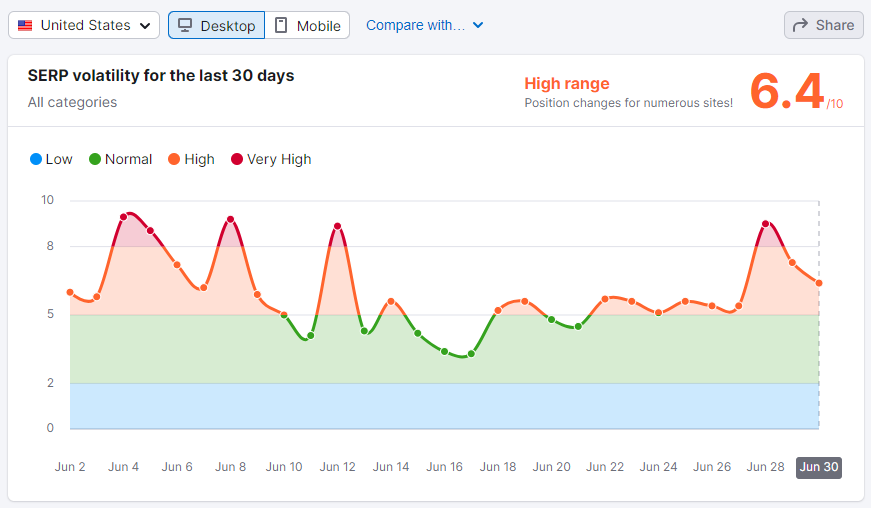June Closes With a Surge in Google SERP Volatility
If you click to purchase a product or service based on our independent recommendations and impartial reviews, we may receive a commission. Learn more

After Google completed its latest spam update on June 27, search engine rankings saw an increase in volatility to close out the month. Spiking on Friday, the unstable rankings have settled slightly since, but still show as highly volatile following the weekend.
With Google’s relentless algorithm updates and efforts to trial new widgets and content in the SERPs, the word “stable” doesn’t come to mind when thinking about Google at present. But, what can website owners do to appease the search engine, and what more can we expect in July?
Is Your Website Ranking at Risk?
Tools used to track search volatility, such as Semrush, show clear signs of disruption over the final June weekend. This comes in the wake of the earlier June spam update, which targeted spammy and AI-generated websites, resulting in a shake-up of rankings once it finished rolling out.
While the volatility isn’t as dramatic as I’ve seen following larger core updates, it will have caused position changes in the SERPs for many sites.
As you can see from the Semrush chart below, the SERP volatility became “Very High” on June 28 – the first time it has spiked that high since June 12.

However, other trackers, such as Similarweb, present different data. Very high volatility can be seen over the week Google’s spam update rolled out, but the SERPs appear to have calmed down after – in contrast to the picture painted by Semrush and others.

What Can Websites Do in July To Maintain Rankings?
Since this surge in volatility comes in the aftermath of a spam update, I’m not surprised to see fluctuations in the SERPs, as Google reassesses what content to promote. And, while no one can predict Google’s next move, website owners should prepare for future updates by continuing to optimize their content and pages following Google’s stated best practice.
Stick to relevant and helpful content; avoid relying on AI-generated content; focus on the needs and pain points of your audience; and target backlinks from local websites. These are all areas of importance that Google has flagged in previous updates.
That said, I advise any website owners who have seen a dramatic change in traffic following the June spam update to wait things out and see what happens next. It can be risky to pivot strategies and get experimental immediately, especially if your website is still in the early stages of growth.
The SERPs are unstable right now, and you might cause greater damage if you stray too far away from your niche or audience. If new updates are announced or further volatility is seen, check back on our site for the latest news.

Leave a comment